#detroit river international wildlife refuge
Text
Most Famous Picnic Place in Michigan

Michigan is a state that is known for its natural beauty and outdoor activities. There are many excellent places throughout the state where you can get away from the hustle and bustle of city life, including picnic spots that offer great views and access to nature, including lakes and streams.

Pictured Rocks National Lakeshore
Pictured Rocks National Lakeshore, America’s first National Lakeshore, is along the southern shore of Lake Superior in Michigan’s beautiful Upper Peninsula. With stunning beaches, 10 inland lakes, and nearly 100 miles of trails, everyone can find something to enjoy at Pictured Rocks!
No matter the time of year, there is something to do at Pictured Rocks!
Summer: visit beaches, backpack, and camp (permit required). Looking for views of the cliffs? The best way to see the cliffs is from the water on a commercial boat tour.
Fall: Autumn colors in the Upper Peninsula are often breathtaking, drive the park roads to view the changing leaves! Hunting and fishing opportunities (state regulations apply) abound during fall!
Winter: Cold weather brings otherworldly frozen waterfalls, called “curtains”. Snowshoeing, skiing, and ice fishing are other popular winter activities. Check road closures and conditions before heading into the park in the winter.
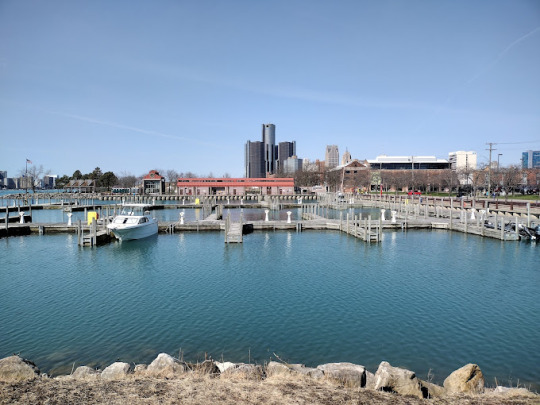
William G. Milliken State Park and Harbor
William G. Milliken State Park and Harbor is located in the heart of Detroit, just east of downtown, along a portion of the city’s Detroit Riverwalk, which provides easy access for fishing, biking, walking and rollerblading.
The park is divided into three areas, including the harbor, the picnic shelter area and the popular berm area. Thanks to recent renovations, the berm now boasts an accessible walkway, handrails and new trees, shrubs and grass. The berm area is especially popular for picnics and wildlife viewing.
At the top of the berm, visitors can view the river and our neighbors in Canada through two new spotting scopes, courtesy of the Detroit River International Wildlife Refuge and Enchroma, that provide an enhanced color view for visitors who are color blind. The berm also boasts an accessible walkway and handrails.
The state harbor provides 52 slips, as well as showers, a laundry facility, grills and picnic tables.
The park is conveniently located near the Outdoor Adventure Center, Belle Isle Park and many other major downtown Detroit attractions.
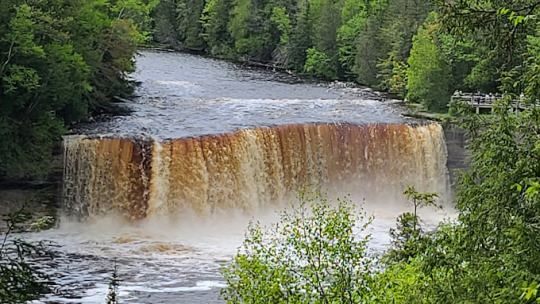
Tahquamenon Falls State Park
Tahquamenon Falls State Park encompasses nearly 50,000 acres and stretches 13-plus miles in Michigan's Upper Peninsula. The park is home to multiple campgrounds, overnight lodging facilities, a boat launch, more than 35 miles of trails and multiple overlooks to the Upper and Lower Falls.
The 200-feet-wide Upper Falls is one the largest waterfalls east of the Mississippi River. The river’s amber color is caused by tannins leached from the cedar, spruce and hemlock trees in the swamps drained by the river, and the extremely soft water churned by the action of the falls causes the river’s trademark large amounts of foam. Just 4 miles downstream is the Lower Falls, consisting of a series of five smaller falls cascading around an island. The falls can be viewed from the riverbank, all-accessible Ronald A. Olson Island Bridge (honoring DNR Parks and Recreation Division chief) over the Tahquamenon River or by a rowboat rented from a park concession. Drone use is prohibited.

Value Plus Auto Parts is an auto parts supplier in the United States. We offer all kinds of automotive parts, from tires and wheels to shocks and struts, you name it. We also carry a wide variety of accessories such as car audio systems and dash kits.
We have a comprehensive range of replacement parts for both domestic and foreign vehicles. Our team of experts is dedicated to providing high-quality products at reasonable prices. We believe in delivering exceptional customer service so we can build long-lasting relationships with our customers.
Value Plus Auto Parts
8121 Livernois, Detroit, MI 48204, USA
+1 31 3931 9999
https://valueplusautopartswholesale.com
https://www.google.com/maps?cid=10429367345021126601
0 notes
Text
24 Republican-Led States Sue the EPA to Overturn a Water Protection Rule
A wetland inside the Detroit River International Wildlife Refuge in Michigan, on Oct. 7, 2022.Photo: Carlos Osorio (AP)
A group made up of 24-Republican led states has filed a lawsuit against the U.S. Environmental Protection Agency over a rule that decides which bodies of water receive federal protection. The lawsuit was filed in a federal court in North Dakota this Thursday.
The rule the group…
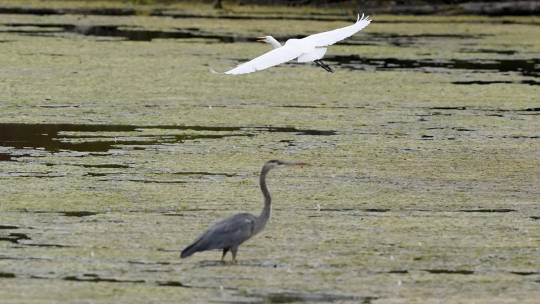
View On WordPress
0 notes
Text
The EPA finalizes a water rule that repeals Trump-era changes : NPR#EPA #finalizes #water #rule #repeals #Trumpera #NPR
The EPA finalizes a water rule that repeals Trump-era changes : NPR#EPA #finalizes #water #rule #repeals #Trumpera #NPR
A great egret flies above a great blue heron in a wetland inside the Detroit River International Wildlife Refuge in Trenton, Mich., on Oct. 7. The Biden administration has announced a finalized rule for federal protection of hundreds of thousands of small streams, wetlands and other waterways.
Carlos Osorio/AP
hide caption
toggle caption
Carlos Osorio/AP
A great egret flies above a great…
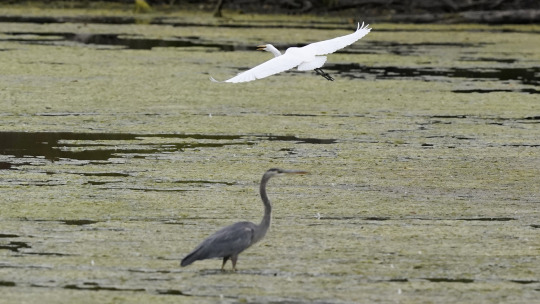
View On WordPress
0 notes
Photo
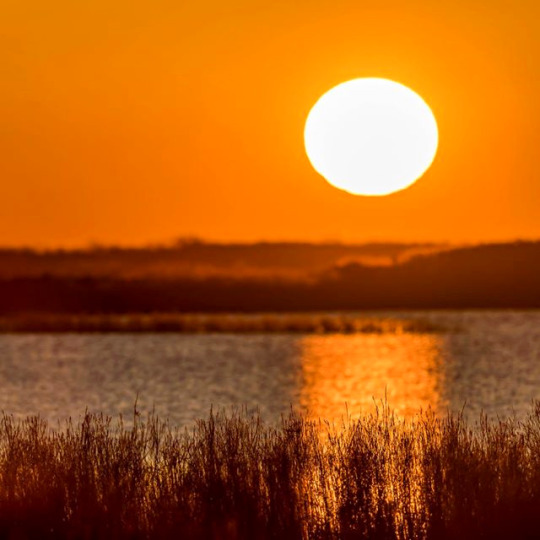
Detroit River International Wildlife Refuge in Michigan was established in 2001 as a result of efforts from politicians, conservation leaders and local communities in America and Canada to build a sustainable future for the Detroit River and western Lake Erie ecosystems. Because of this collaboration, international status was given to the refuge - making it the first of its kind in North America. The refuge consists of nearly 6,000 acres of unique habitat, including islands, coastal wetlands, marshes, shoals and waterfront lands. Gorgeous sunrise above the refuge by Tom Kachelmeyer, U.S. Fish and Wildlife Service.
#detroit river international wildlife refuge#detroit river#wildlife refuge#usfws#us fish and wildlife service#u.s. fish and wildlife service#Michigan#usinterior#public lands#nature#outdoors#america's great outdoors#sunrise#wetlands#amazing view#awesome experience
354 notes
·
View notes
Photo
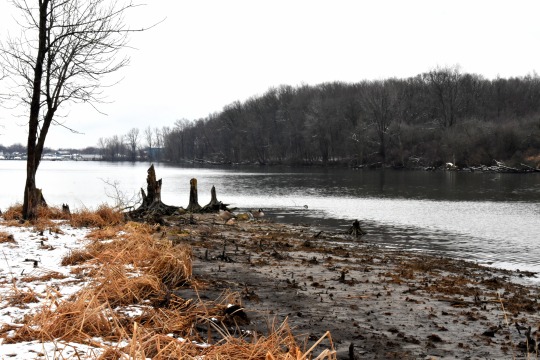

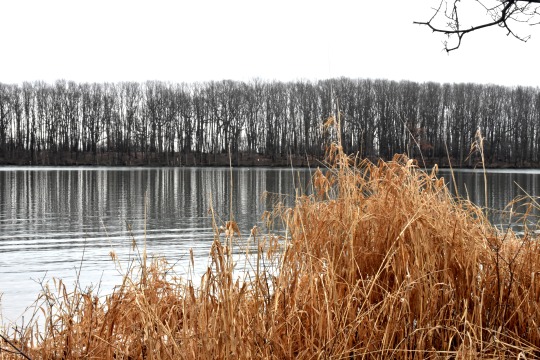
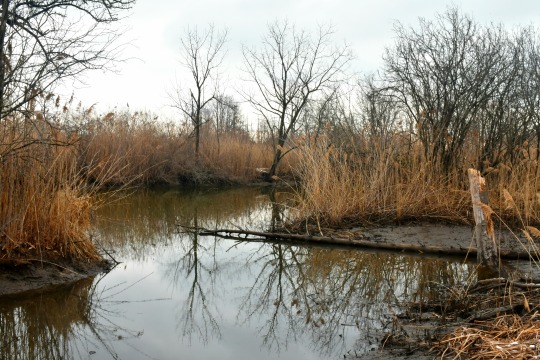
Detroit River International Wildlife Refuge, April 3rd 2022
32 notes
·
View notes
Text
Great Lakes Moment: River otters return to western Lake Erie
Most people know river otters from zoos or YouTube videos as endearing playful creatures that can put a smile on anyone’s face.
The river otter, once common throughout much of North America, was first reduced by trapping and then displaced from many areas by loss of habitat from urbanization and pollution. But sightings along western Lake Erie at Ottawa National Wildlife Refuge in Ohio and Point Pelee National Park in Leamington, Ontario, and evidence of a return of river otter to Toronto Harbour, raise the prospects that they just might return one day to the Detroit River too.
The river otter makes its home near the water. They live in a den by the edge of a lake, stream, or marsh. One fun fact is that River Otters don’t dig their own dens, they either use a natural hollow or burrow made by another animal. Otter dens feature numerous tunnels with easy access to water, especially for night hunting for fish, amphibians, crayfish and other aquatic delicacies. They can even close their nostrils to keep water out during long dives and stay underwater for up to 8 minutes.

Trail cam photo of a river otter from the Toronto and region watershed. (Photo credit: Toronto Region Conservation Authority).
Historically, river otters were present throughout most of North America, including southeast Michigan and southwest Ontario. One Monroe County, Michigan, creek is even named Otter Creek, a testament to how common they were during the late 1700s. However, that all changed during the Fur Trade Era when river otters were harvested in large numbers for their valuable water-resistant pelts. While hunting and trapping reduced otter numbers in Michigan, Ontario and Ohio, urbanization and water pollution proved to be the final blows. By the early 1900s these semi-aquatic mammals were gone.
In 1986, the Ohio Department of Natural Resources began a 7-year project to reintroduce river otters to areas with clean water and abundant food supply. More than 100 River Otters were captured in Arkansas and Louisiana, where they were still common, and transported to eastern Ohio. They were then released in the Grand River (a tributary of the central basin of Lake Erie) and Killbuck Creek, Little Muskingum River and Stillwater Creek, which flow into rivers that are part of the Mississippi River watershed.
By all accounts the river otter has not only survived but thrived in these watersheds. Monitoring has shown slow but steady growth of the population, and in 2002 it was even removed from Ohio’s list of state endangered species. But as the river otter population grew, individual otters began to adventure out to new watersheds – what scientists call expanding their range.
Some of the adventurous otters have now found a home in western Ohio. River otter sightings have occurred annually for more than 10 years from Cedar Point south to Darby, Ohio, near Columbus. Along the southern shore of western Lake Erie, not only have they been seen in Cedar Point, but Ottawa National Wildlife Refuge located just 15 miles east of Toledo, Magee Marsh Wildlife Area and the Toussaint River. Ottawa National Wildlife Refuge manages 6,500 acres of wetlands, grasslands and woodlands for protection of a wide diversity of waterfowl and other migratory birds, resident wildlife, and threatened and endangered species. Refuge biologists and volunteers have confirmed that they are now reproducing in refuge. What a thrill for conservationists and nature lovers to see them frolicking in the waters of western Lake Erie after an 80-year absence.
In March 2019, a naturalist discovered a set of tracks in the snow at Point Pelee National Park in Leamington, Ontario, on the northern shore of western Lake Erie. The tracks were discovered near the DeLaurier Canal and immediately they knew that they were not the mink tracks often seen in the park. There was a set of mink tracks nearby for comparison, which were much smaller, narrower and of course did not have the “slide” marks characteristic of otters.

Suspected river otter tracks at DeLaurier Canal, 2019. (Photo courtesy of Point Pelee National Park.)
Then in June 2019, two Parks Canada team members were in a boat entering the channel to West Cranberry Pond in the park marsh when an otter swam very close to their boat before diving underneath. Within a couple of weeks of that sighting, another team member working at the marsh boardwalk saw an otter swimming in the open water just to the left of the marsh tower. You can imagine how exciting it would be for a naturalist to see the return of river otters to this revered national park for the first time since it was established in 1918.
Situated on the northern shore of Lake Ontario is Toronto – Canada’s largest city and a key hub of the nation’s commercial, financial, industrial and cultural life. It has long been recognized as a pollution hotspot. In 1985 the International Joint Commission identified Toronto and region as a Great Lakes pollution hotspot and area of concern. Since then, substantial cleanup of pollution and habitat restoration have occurred, resulting in a surprising ecological revival.
More than $80 million alone have been invested in habitat restoration in Toronto and region since 1987. One exciting wetland restoration project has been Corner Marsh at Duffins Creek. For decades it had been in a degraded state, and over 10 years ago it was restored to the point where wetland vegetation, nesting birds and amphibians were flourishing again. Corner Marsh now has the highest population density of muskrats on the north shore of Lake Ontario, which attracted river otters to the area. River otters then spread from Duffins Creek and now occupy the entire Toronto waterfront. It has been over a hundred years since river otters freely inhabited the Toronto waterfront.
Knowing that river otters have returned to the once heavily polluted Toronto Harbour, that they have been successfully reintroduced into eastern Ohio, and that they have now been seen along western Lake Erie in Point Pelee National Park, Ottawa National Wildlife Refuge and other locations, is it possible that they just might return one day to the Detroit River?
I say yes.
Skeptics might say no. But we must all remember that as recently as 1985 there were no bald eagles, peregrine falcons, or osprey reproducing in the Detroit River watershed because of eggshell thinning caused by pesticides like DDT, no lake sturgeon or lake whitefish were reproducing in the Detroit River, and beavers had long disappeared.
Today they are all back. Wouldn’t it be wonderful if we had one more ecological surprise?
Check out the Detroit Zoo’s live otter cam HERE.
(source: Great Lakes Now)
By John Hartig, Published May 4, 2020
Great Lakes Moment is a monthly column written by Great Lakes Now Contributor John Hartig. Publishing the author’s views and assertions does not represent endorsement by Great Lakes Now or Detroit Public Television.
5 notes
·
View notes
Photo

Yeah, Truck Dawg here to tell ya Get Out!! Take a Hike will ya? And take yer pooch!! #buckaroo #podengo #houndsofinstagram #hounddog #rescuedog #f150 #ford #fordtrucks @ford loves #dogs #lifeisgood (at Detroit River International Wildlife Refuge) https://www.instagram.com/p/CHWMfRHj0xL/?igshid=18p9rkwp7xlwn
0 notes
Photo

From Wikipedia Picture of the Day; January 30, 2017:
A panoramic view of the Detroit International Riverfront, a tourist attraction and landmark of Detroit, Michigan. The area encompasses a marina, a multitude of parks, restaurants, retail shops, skyscrapers, and high-rise residential areas along with Cobo Center, Joe Louis Arena, and the only international wildlife preserve in North America.
Photograph: Chris Woodrich
2 notes
·
View notes
Text
Construction Done for Detroit River School Ship Dock, Pier by THE ASSOCIATED PRESS
By THE ASSOCIATED PRESS
Construction has been completed for a school ship dock and fishing pier at the gateway to the Detroit River International Wildlife Refuge.
Published: October 17, 2017 at 05:33AM
from NYT http://ift.tt/2ifawGl
via IFTTT
from WordPress http://ift.tt/2hMaWQU
via IFTTT
0 notes
Photo

Wildlife Refuge Visitor Center To Bear John Dingell’s Name GROSSE ILE (WWJ/AP) — A new visitor center at the Detroit River International Wildlife Refuge is being named in honor of former U.S.
1 note
·
View note
Text
Reconnecting in Detroit: The Transformative Potential of Citizen Science
Reconnecting in Detroit: The Transformative Potential of Citizen Science
Gabrielle Herin always loved animals and nature. At the age of fourteen, she came knocking at the door of the Detroit River International Wildlife Refuge looking for volunteer opportunities. She quickly became involved in invasive species removal, tree planting, trail maintenance, Hawkfest, Pointe Mouillee Waterfowl Festival, and bald eagle tours. Her love of the outdoors and passion for conservation were heightened by her citizen science and stewardship experiences at the refuge. Over a five-year period, she volunteered over four-hundred-fifty hours at the refuge, where she came to see how she is part of...
from The Center for Humans & Nature Blog https://www.humansandnature.org/reconnecting-in-detroit-the-transformative-potential-of-citizen-science
0 notes
Text
About the Detroit International Wildlife Refuge (DIWR)
Volunteering at the DIWR Humbug Marsh unit this morning! Humbug is the center of the DIWR—it is the last mile of natural shoreline along the United States side of the Detroit River (97% of the Detroit River shoreline has been disturbed or destroyed by steel, chemical and manufacturing plants). The area spans from the cities of Gibraltar to Trenton. Thanks to the late John DIngell, our country’s longest-serving congressman, this land was barely saved from also being developed. Nolan Finley published an article in the Detroit News back in August about Dingell and his advocation for the remediation of the Detroit River…
http://www.detroitnews.com/story/opinion/2017/08/12/finley-dingell-legacy-detroit-river-humbug-marsh/104540502/
0 notes
Text
Building relationships, building community: Detroit welcomes Sigma Beta Club
Building relationships, building community: Detroit welcomes Sigma Beta Club
Detroit River International Wildlife Refuge collaborated with Phi Beta Sigma Fraternity, Incorporated to give youth from across the country a chance to answer this question for themselves. Phi Beta Sigma has been focused on building the next generation … {$inline_image} To read the full story please click here: Building relationships, building community: Detroit welcomes Sigma Beta Club
View On WordPress
0 notes
Photo
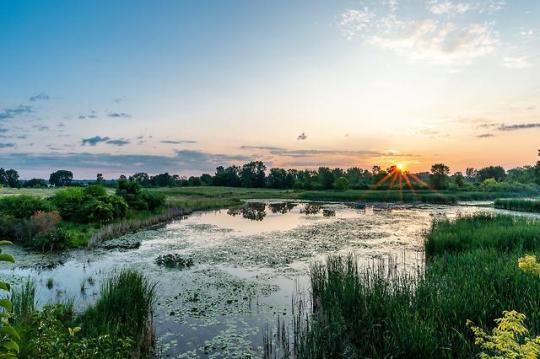
Located along the lower Detroit River and western shoreline of Lake Erie just 20 miles south of Detroit, Detroit River International Wildlife Refuge is truly unique. The refuge was established in 2001 as a result of binational efforts from politicians, conservation leaders and local communities to build a sustainable future for the Detroit River and western Lake Erie ecosystems. Because of this collaboration, international status was given to the refuge, making it the first of its kind in North America. The refuge consists of nearly 6,000 acres of unique habitat, including islands, coastal wetlands, marshes, shoals and waterfront lands within an authorized boundary extending along 48 miles of shoreline. It’s home to 300 species of birds, including 30 species of waterfowl, 23 species of raptors, and 31 species of shorebirds, plus 117 kinds of fish -- all within an urban area of six million people. Photo by Volunteer Tom Kachelmeyer, U.S. Fish and Wildlife Service.
#public lands#landscape#nature#sun star#wildlife refuge#detroit#lake erie#landscape photography#nature photography#travel#urban refuge#outdoors#michigan#pure michigan
473 notes
·
View notes
Link

Photo credit: U.S. Fish and Wildlife Service; Detroit students and staff from the U.S. Fish and Wildlife Service participate in "Sturgeon Day" on the Detroit RiverWalk
Excerpt:
Citizen science is public involvement in environmental monitoring and scientific research to help improve civic understanding of both science and the scientific method, further ecosystem-based management, and develop a stewardship ethic. The goal should be to make citizen science so compelling that it leads to a transformative moment that inspires individual respect, love, and stewardship of ecosystems.
Metropolitan Detroit is probably best known as the automobile capital of the United States and one of the rustier parts of the Rust Belt. During the 1960s, the river that bears its name—the Detroit River—was one of the most polluted rivers in North America. There were no bald eagles, peregrine falcons, or osprey reproducing in the Detroit River watershed; beavers were trapped out; common terns were extirpated from the 980-acre island park called Belle Isle; no lake sturgeon or lake whitefish were reproducing in the river; and walleye were considered to be in a crisis state by the Great Lakes Fishery Commission. Today, in response to cleanup of the river, bald eagles, peregrine falcons, osprey, lake sturgeon, and lake whitefish are reproducing again, beavers are back, common terns have returned to Belle Isle, and the Detroit River is now considered part of the “Walleye Capital of the World.”
Riding on the coattails of this ecological revival, major efforts are underway in Metropolitan Detroit to connect people with nature and continentally significant natural resources like the Detroit River. In downtown Detroit, the Detroit Riverfront Conservancy and its many partners are building the Detroit RiverWalk with connections to neighborhoods. In the greater metropolitan Detroit area, we now have over 1,000 miles of greenways and a Detroit Heritage River Water Trail. Our Detroit River is no longer just a polluted river in the Rust Belt, but the only international heritage river system in North America and part of the only international wildlife refuge in North America—the Detroit River International Wildlife Refuge.
Coupled with this revival and efforts to connect people with nature are enhanced efforts to involve people in citizen science, whether this involves performing angler surveys, identifying aquatic invertebrates collected from river and lake sediments, counting birds, listening for frogs, spotting salamanders, collecting butterflies or dragonflies, or measuring water quality. And this need is increasing because environmental and natural resource management agencies do not have the resources to collect and analyze data to adequately inform management decision-making. Selected examples of compelling citizen science are presented below.
2 notes
·
View notes